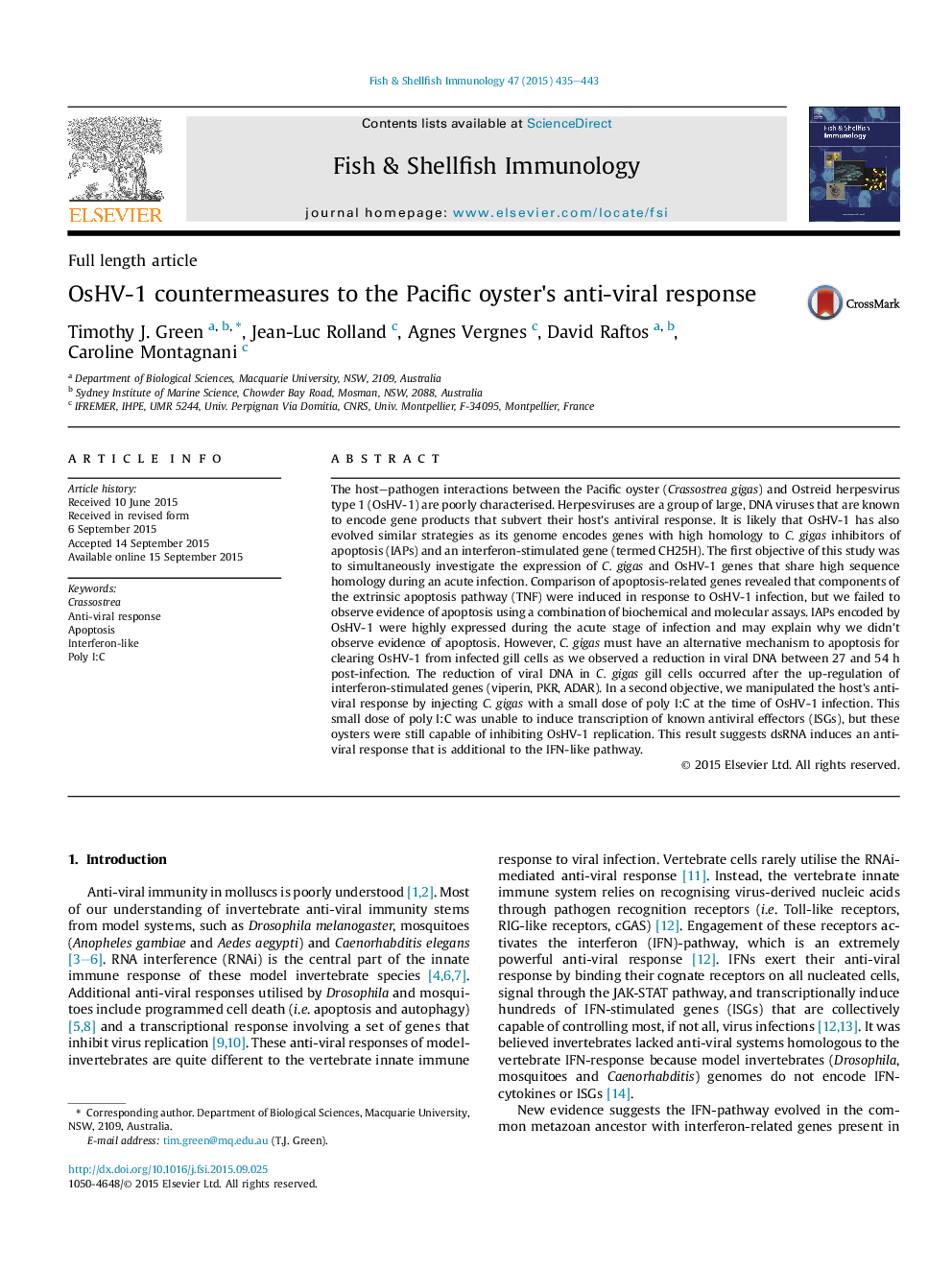| کد مقاله | کد نشریه | سال انتشار | مقاله انگلیسی | نسخه تمام متن |
|---|---|---|---|---|
| 2431108 | 1106744 | 2015 | 9 صفحه PDF | دانلود رایگان |

• Components of the oyster apoptosis pathway (TNF) are induced in response to OsHV-1.
• OsHV-1 genome encodes multiple inhibitors of apoptosis, which are highly expressed during the acute infection.
• Results from biochemical assays suggest apoptosis isn't occurring in response to OsHV-1 infection, suggesting the virus may regulate apoptosis.
• Host ISG expression was not activated in oyster's injected with a low concentration of poly I:C.
• Oyster's simultaneously injected with poly I:C and OsHV-1 were capable of inhibiting virus replication, suggesting dsRNA induces an anti-viral response that is additional to the IFN-like pathway.
The host–pathogen interactions between the Pacific oyster (Crassostrea gigas) and Ostreid herpesvirus type 1 (OsHV-1) are poorly characterised. Herpesviruses are a group of large, DNA viruses that are known to encode gene products that subvert their host's antiviral response. It is likely that OsHV-1 has also evolved similar strategies as its genome encodes genes with high homology to C. gigas inhibitors of apoptosis (IAPs) and an interferon-stimulated gene (termed CH25H). The first objective of this study was to simultaneously investigate the expression of C. gigas and OsHV-1 genes that share high sequence homology during an acute infection. Comparison of apoptosis-related genes revealed that components of the extrinsic apoptosis pathway (TNF) were induced in response to OsHV-1 infection, but we failed to observe evidence of apoptosis using a combination of biochemical and molecular assays. IAPs encoded by OsHV-1 were highly expressed during the acute stage of infection and may explain why we didn't observe evidence of apoptosis. However, C. gigas must have an alternative mechanism to apoptosis for clearing OsHV-1 from infected gill cells as we observed a reduction in viral DNA between 27 and 54 h post-infection. The reduction of viral DNA in C. gigas gill cells occurred after the up-regulation of interferon-stimulated genes (viperin, PKR, ADAR). In a second objective, we manipulated the host's anti-viral response by injecting C. gigas with a small dose of poly I:C at the time of OsHV-1 infection. This small dose of poly I:C was unable to induce transcription of known antiviral effectors (ISGs), but these oysters were still capable of inhibiting OsHV-1 replication. This result suggests dsRNA induces an anti-viral response that is additional to the IFN-like pathway.
Journal: Fish & Shellfish Immunology - Volume 47, Issue 1, November 2015, Pages 435–443